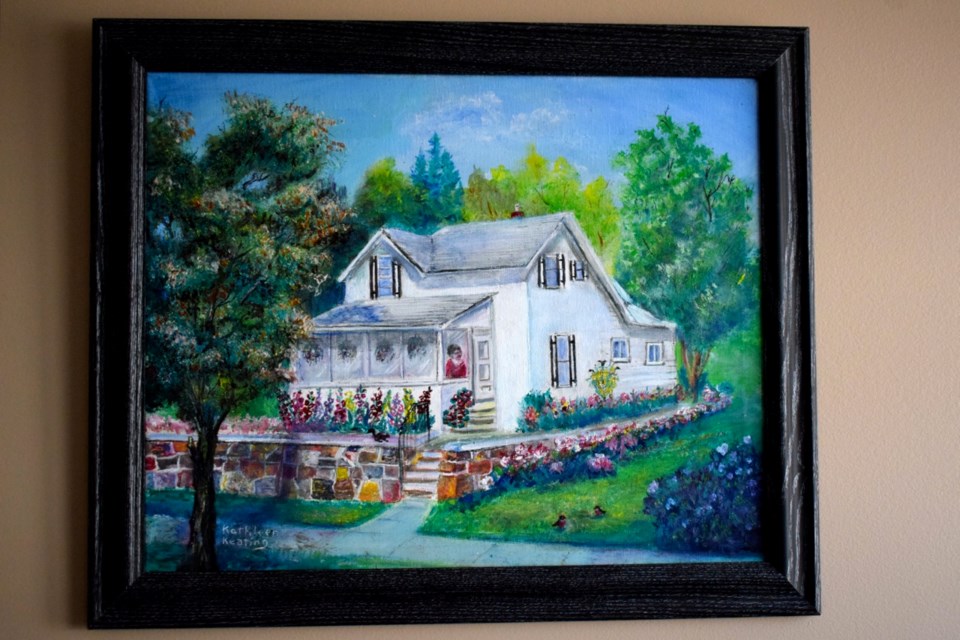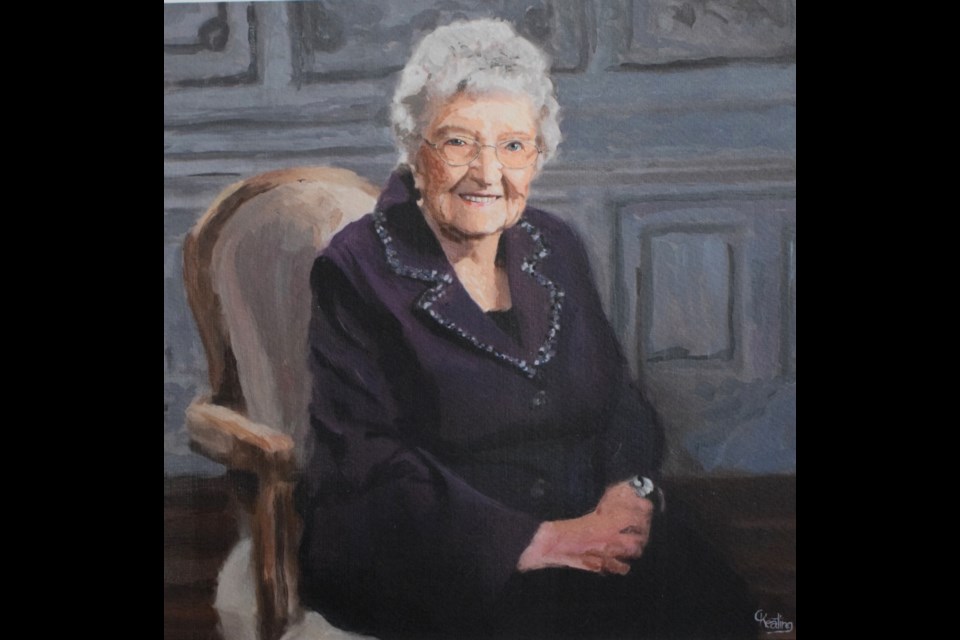A lot has changed over the past 100 years, especially when it comes to women's rights and their position in society.
The Mercury decided to wrap up our Women of Estevan special section with the story of Blanche Keating, an outstanding local woman who was born a year after Saskatchewan recognized women's right to vote in the provincial and federal elections. While Keating's parents were very progressive for their times, kids still first-hand experienced many of the changes in the communities around them and witnessed a long-term process of the world opening up and becoming more and more inclusive.
Keating was born and raised in the Weyburn area. The family had seven children – six daughters and a son. Life wasn't easy, the farmhouse didn't have many amenities and the family didn't have much money, but the parents knew that all of their kids had to have an education.
"We were progressive … We lived on a farm, and we were one of the few families that went on for education. But my dad and mom were very determined that the girls needed something, that they could look after themselves if they had to … So we all knew that we were expected to go ahead and get (some education)," Keating recalled.
The basic education the children received wasn't focusing on gender differences. Kids went to a country school three kilometres away from home. There was one classroom for 20 children from Grades 1-10. One teacher. There was no room or time to distinguish between girls and boys, educating them according to what then could have been observed as more useful skills based on the gender of a student.
While all kids went through the same curriculum, Keating recalls that when she was fresh out of school, women's career opportunities were limited, as they weren't allowed into many fields perceived as men-prerogative.
"There were no women doctors that I knew of," Keating said as an example.
More women started pursuing careers starting in the 30s, but for a while, they still didn't have too many options.
"For women, it was mostly nurses, teachers and secretaries … Or else otherwise, you worked in a hotel or restaurant," said Keating, adding that housework was still a popular path for many women.

Some people that graduated high school around Keating's time went beyond and received further education. Not every family could afford education in the ’30s when there were hardly any jobs available. In Keating's case farming helped a lot. Her oldest sister, born in 1909, went into nursing. The next sister also followed these steps, so did some of their cousins. With financial support from older siblings, Keating chose a different path, which still aligned with the women's field at that time.
"(In the mid-30s) I went to commercial school (in Regina) for a year and I got my certificate to be a secretary, a stenographer. But there was no work," recalled Keating. "I came home and got only one interview and that's all. I had no work and I wasn't doing anything, so my mother suggested, 'Why don't you go into teaching?' There were openings. That's why I became a teacher."
Teacher's training back then took only one year, and soon Keating started teaching in a country school.
She said there was no pressure anymore for young women to get married, but youth prevails, and she met her husband-to-be soon after she started working. She was boarding at his cousin's place, when they got to know each other in the late ’30s and then started their own family.
Keating says that it felt that the society she knew changed significantly with the war.
"I think the change was really during the Second World War. There were no people for the jobs with the young men all going to war. So women had to go into those spots. And that's what kind of opened up more women to different careers."
The war changed the vision of women as well. Girls at Keating’s house weren't allowed to swear, tell filthy jokes or read filthy books, and her father-in-law was disgusted by women smoking. These standards weren't completely dissolved by the war, and things that weren't acceptable for women before started becoming normalized to the same point, as they were normalized for men.
The family moved into Estevan during the boom in the 1960s, when the area was flourishing. Keating noted that with women's involvement in all spheres significantly growing in the ’30s and ’40s, by the time they moved to Estevan it was already a common thing to see females working the same jobs as men.
While in many areas, there was a wage imbalance, Keating said the Saskatchewan teachers' union achieved guaranteed minimum wages for all teachers, thus making it more equal for all employees.
The world kept changing, and Keating's family kept growing. They raised 11 children. After moving to Estevan, Keating switched to elementary school and retired from teaching in 1982, ending a career she enjoyed.
"It was enjoyable work. It wasn't like a teacher nowadays that is rushed off their feet. You just simply taught and that's it ... I had my family at that time, and I think because of having your own family you understood children more."
If Keating's family could come together for a reunion these days, there would be about 130 people present – a group that also tells the history of changes in society.
During her time, Keating was rather an exception when it came to education, but nevertheless, girls in her family finished school and then went through certification to pursue popular "women's" careers. Already for her daughters, it was a norm to go to university, thus widening up their opportunities. And Keating's grandkids and great-grandkids are now becoming architects, engineers and anything else they want, rarely facing the gender-related inequalities in the world of the workforce and in life.




